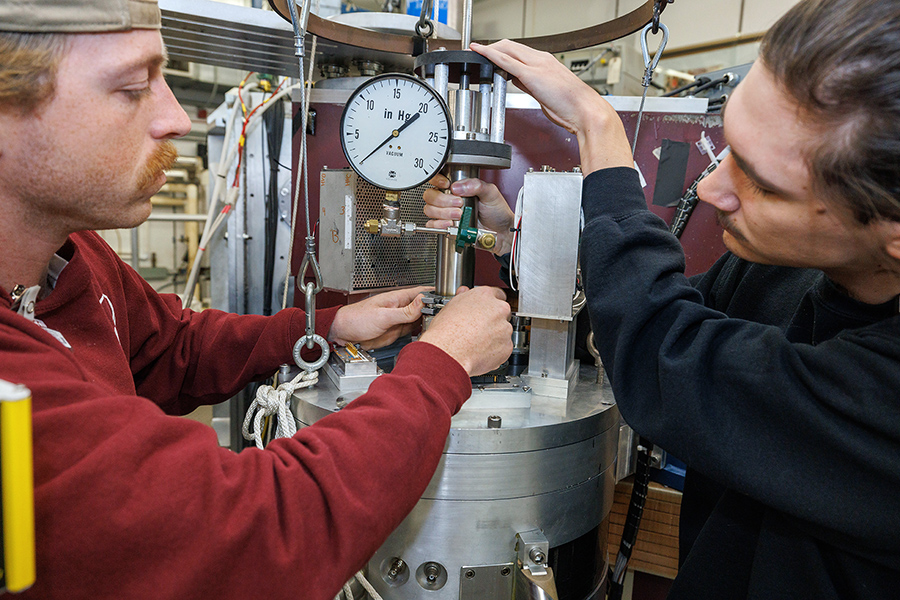The UCAH’s mission is to serve United States Department of Defense (DOD) requirements in science and technology, workforce development and technology transition. The consortium is a collaborative network of universities working with government, industry, national laboratories, federally funded research centers and existing university affiliated research centers that aims to advance modern hypersonic flight systems in support of national defense. The undergrads were accompanied to the forum by their advisors.
“I have always been interested in propulsion, so when I came to UAH and discovered the PRC, I reached out to Dr. Frederick about doing research,” Allen says. “Once I explained what I was interested in, he had me begin research on solid fuel ramjets. Presenting was a daunting experience at first when I realized I was one of the only undergraduates presenting. I appreciate the chance to talk to other academics as well as people in industry. They were able to give me insight on future opportunities as well as the ability to showcase my research and get more comfortable talking to those kinds of people in the field.”
Sharrard was equally grateful for the challenge of highlighting her work. “Presenting at the forum was nerve wracking as it was my first research poster presentation I had given anywhere,” the student says. “There were only about 20-24 posters total, and out of those, maybe only 4-5 were done by undergraduates, including myself and Olivia. This was a wonderful opportunity to apply the knowledge I’ve been learning within my classes to real world applications. I also was able to experience the professional side of hypersonics and how research is applied to engineering problems companies may have.”
The consortium seeks to mobilize and leverage the academic community and its partners to deliver time-sensitive applied solutions to DOD-defined research and prototype projects in the following areas: core technology, next-generation projects (enabling technologies) and challenge projects (multidisciplinary efforts).
“This summer, I worked at the PRC studying regression rate augmentation of grains [propellants] in solid fuel ramjets,” Allen notes, the focus of her presentation. “This consisted of testing a propellant at different conditions and adding components to the grains to increase their burn rate to produce more fuel at a higher rate. After working in propulsion and performing tests, I would like to continue doing research or just working in propulsion possibly as a test engineer after I graduate.”
“My specific research into the injector orifice geometry came from unanswered questions surrounding a previous experiment using higher test pressures,” Sharrard adds. “Over the summer I conducted research over how injector orifice geometries affect certain variable coefficients. I also assisted with engine testing and machining of components for the engines.”
The UAH students report that one of the most gratifying aspects of the event proved to be learning about “all the different careers encompassed under the world of hypersonics and what I may one day be a part of professionally,” Sharrard points out. “The experience was second to none in that I was able to talk with professionals about my research and not only inform them of future developments, but also gain knowledge from them about how I could improve my testing or things to consider applying in future testing. The connections made at the forum, not only between other university students but also professionals, is priceless.”
Kristina Hendrix
256-824-6341
[email protected]
Julie Jansen
256-824-6926
[email protected]


